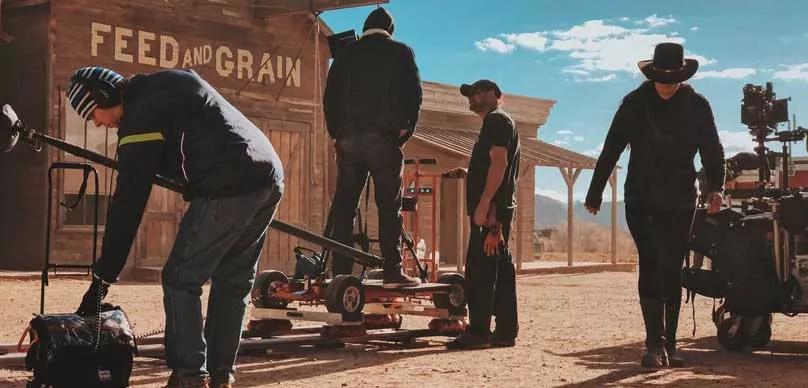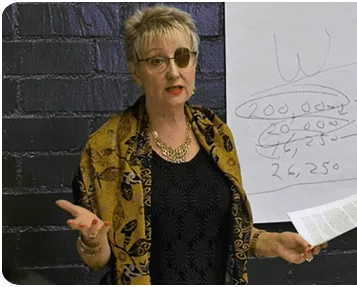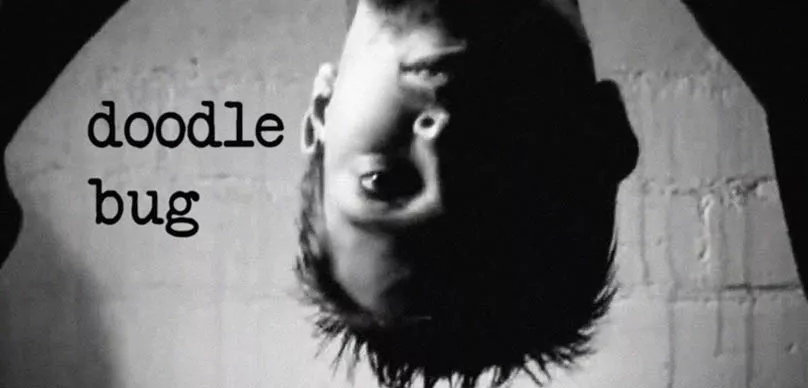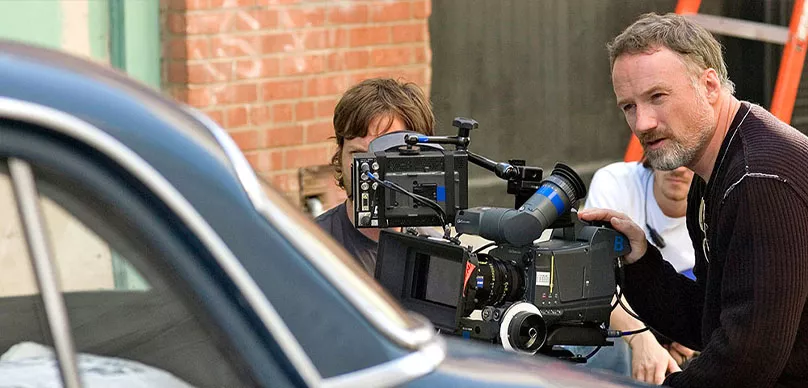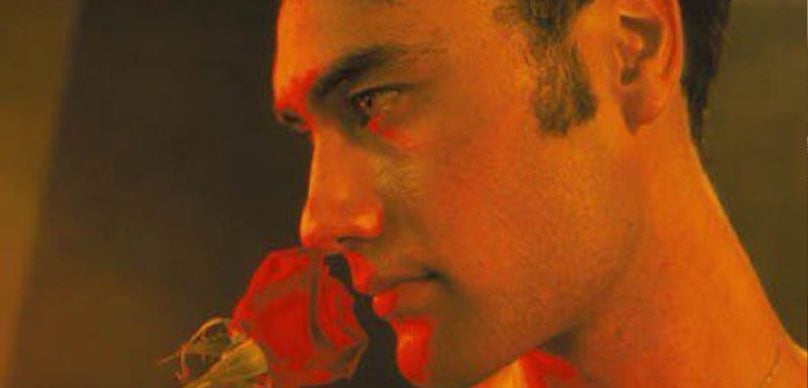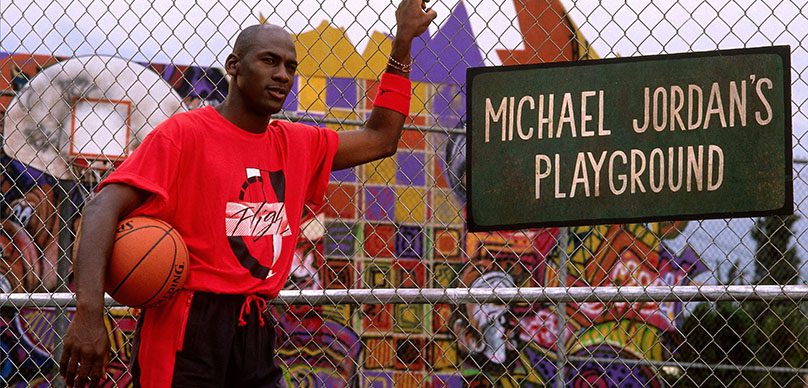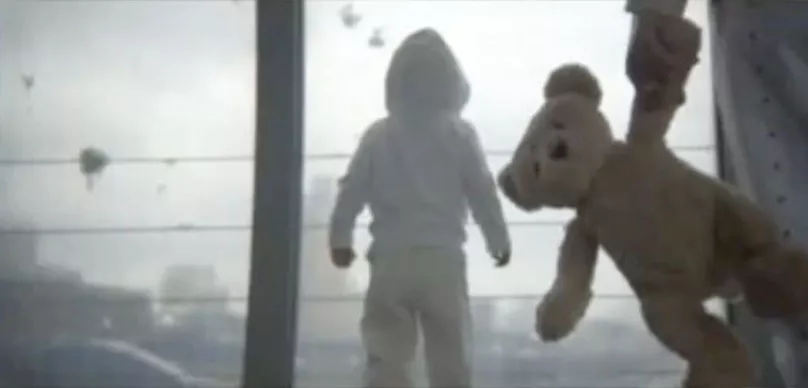Unlike many other art forms, filmmaking needs a film crew of collaborators to bring the art to life. A film’s success or failure depends on the ability of the film crew to make good decisions.
If you are new to filmmaking, you might find it helpful to take some time to learn about the roles of the various members of a film crew and how they can contribute to making a successful film. This article will briefly discuss the film crew positions in a typical production.
Please note: We have added a couple of ridiculous easter eggs for the film and tv professionals in the audience. Enjoy!
Table of Content (click to jump to the department of your choice)
- Above the Line
- Below the Line
- Assistant Directors
- Locations
- Transportation
- Sound
- Continuity
- Camera Department
- Grip Department
- Electrical Department
- Art Department
- Props
- Costume and Wardrobe
- Hair and Makeup
- Stunts
- Visual Effects
- Special Effects
- Catering and Food Services
- Safety
Above the Line vs. Below the Line
“Above the line” film crew positions are usually found at the very top of a production hierarchy chart. Above-the-line crew members are those who carry the most creative or financial responsibility for a given project and usually work from pre-production to post-production.
They are the ones who make major decisions and are often directly responsible for securing financing.
Most of the crew on a film set is “below the line.” Their job descriptions are varied from department to department. This large collection of film set jobs would be broken down into separate departments. A film crew hierarchy is contained within each of the individual departments and starts with a department head.
Above-the-Line Crew
Film Director
The term “director” usually refers to someone who directs actors on stage, in a movie, on television, or even in video games. However, a film director also directs the other people involved in the production. This includes casting, scriptwriting, and even the special effects and music in the film.
Many directors like Christopher Nolan, Quentin Tarantino, and David Fincher are considered “Auteurs.” Auteur Theory is a way of looking at films that state that the director is the “author” of a film.
Film Producer
A film Producer is often responsible for ensuring all the details fall into place for the production of a movie. One key thing to know is that the majority of projects have multiple producers. Another key thing to know is that there are different types of producers.
Some focus predominantly on securing funding and/or distribution and/or attaching special assets early on in the development process, in the independent world, while some focus on story and creative aspects of the project, while some focus on specific stages of filmmaking such as development or post-production.
This can include but is not limited to setting the tone of the production (i.e., what tone should the production be set at), picking a director, and finding a cast and crew.
A producer also handles casting (finding the actors and actresses, usually in conjunction with the director), organizing the budget, and hiring the staff needed to make a film happen. A film producer usually hires all the professionals needed to create a movie. More commonly, they hire the department heads, which in turn bring the rest of the crew on board.
They make sure that everything’s going according to plan. They might also work closely with directors and screenwriters, especially when making decisions about cost. They typically have the final say on any decisions affecting the final output of the film, for example, the final edit, unless someone like the director is contractually entitled to this.
There are many types of producers. Some producers only deal with the financing of the film, others are development/creative, and some producers are connectors and only find money and/or talent.
Executive Producer
The executive producer is the person who sources and secures the financing for film production. The executive producer’s top priority is ensuring enough money for the project.
Below the Line Crew – Production
Line Producer
During preproduction, often, it is the line producer who generates the full production (sometimes called a line item) budget, as well as breaks down the script and generates a preliminary shooting schedule. The line producer ensures that the movie is shot according to the production schedule and budget.
On the production side, the line producer’s main task is to make sure that the movie is delivered on time and under budget. If it doesn’t meet these goals, he or she will make sure to change things up until the filming is completed.
It’s not a creative role. Typically, it’s all about project management. The line producer hires most of the “below the line” talent and craftspeople. Sometimes they are required to get approval from the producer and/or director for choices in department heads. The best ones make the budget and ensure the project doesn’t go over.
Unit Production Manager (UPM)
On very low-budget movies, this position is often combined with that of a line producer. A UPM or unit production manager manages the day-to-day operations of the film production team (film crew) and ensures that they are well-supported and equipped to complete their tasks.
In other words, a UPM ensures the cast and crew’s safety during production and that the final footage meets expectations. More often than not, this is done in conjunction with one or more of the producers. The job requires great attention to detail.
A unit production manager might also ensure that safety rules are followed during filming. This is because it is vital that the safety of actors and crew is the number one priority, especially when shooting on location.
Production Coordinator
In lower-budget production, this role is often combined with UPM. Production Coordinators are essential for making sure that all the little things happen on a set or in a movie studio. They keep everything in sync and organized on a film set. They ensure that there’s enough food and drinks on set. They check in with various departments to avoid and/or solve minor to medium-level problems.
They ensure that the actors are prepared and managed. They make sure everyone is where they need to be before they begin filming each day on set.
Assistant Production Coordinator
The Assistant Production Coordinator is involved in all aspects of production, from solving problems on the set and distributing scripts to handling everything on set’s logistics.
Set Accountant
The Set Accountant monitors the film production’s finances, making sure that he or she keeps track of expenses and that the production stays on budget. It requires specialized knowledge of how the various departments of a production function on their own, both physically and financially.
Office Production Assistant
Office production assistants’ duties typically include: assisting with answering phones, filing paperwork, and data entry; organizing lunches, dinners, and transportation reservations; photocopying; general office administration; and distributing production paperwork.
Assistant Directors
1st Assistant Director
A 1st Assistant Director (first or 1st AD) is one of many crew members responsible for keeping the set running smoothly. They are debatably the most important crew position that handles this. A 1st AD coordinates various functions on set with the rest of the crew.
They manage the day-to-day operations of the film production, from scheduling cast, crew, and equipment to coordinating with certain department heads as it pertains to shoot schedule. They are typically in charge of safety on set and supervising the shooting of each take.
2nd Assistant Director
A second assistant director creates daily call sheets from the production schedule. The “second” also serves as the “backstage manager”. They liaise with actors, put them through their make-up and wardrobe, and relieve the “first” of these duties. They report to the 1st AD.
2nd 2nd Assistant Director
The 2nd 2nd AD (often referred to as the 3rd AD outside the U.S.) is the primary assistant to the first assistant director and is responsible for coordinating the work of all the background actors, certain crew, production assistants, and sometimes talent.
Key Production Assistant
This is the lead production assistant on production. Many times they will help the first assistant director and line producer coordinate the other production assistants on a film set.
Production Assistants
A production assistant (PA) helps keep a film or television project’s cast, crew, and production staff organized and on track.
This can include: setting up aspects of the set, taking out the trash, helping cast and crew find their stations, running errands for various departments, making sure that there are enough food and drinks available, and most importantly, taking care of the actors and crew.
Production Assistants, while critical to a well-run set, are not involved in any decision-making of any kind for the film. It is often considered the lowest rung on the production ladder and hierarchy. Having said that, it is still important. For someone without formal departmental training, this is a perfect starting position for someone who wants a career in film production.
Having qualified technicians handle equipment helps keep everyone safe.
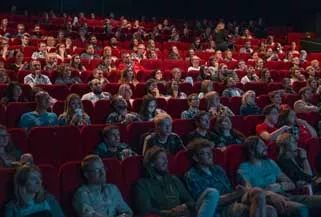
Are you Tired of Paying Film Festival Entry fees?
Learn the techniques that worked in 600+ film festival entries. Download our six tips to help you get into film festivals for cheap or free.
Locations
Location Manager
The location manager is responsible for managing shooting locations to be used in a film. This can (occasionally include scouting for locations) include dealing with permits, settling location contracts, coordinating with other departments, and more.
Location managers are also responsible for making sure that the production company, the cast, and the crew all have the best experience possible on set. If the location manager is not properly prepared and knowledgeable, the entire production may fail to meet the director’s vision for the film.
Location Scouts
The location scout’s job is to find the perfect place to shoot. He or she will study the space, read the script, and make sure there are no major obstacles in the way. The location scout will most likely meet with the director and producers to determine if the space suits their needs.
The location scout should also have a keen eye for cost. Because the location scout will be doing a lot of scouting for free, he or she must be able to find good locations for a fee that fits within the production budget. On low-budget productions, this position may be absorbed by one or more of the producers.
Transportation
Transportation Captain
The Transport Captains in your film transport the cast and crew from one location to another by private cars, mini-buses, or coaches. If you’re a low-budget film, you may only have one Transport Captain who makes sure that everyone arrives on time.
Transportation Coordinator
The transportation coordination person will coordinate all transportation needs for the production. Transporting equipment and crew to the filming locations and any other necessary areas relative to the shoot is included.
Picture Car Coordinator
The picture car coordinator is responsible for everything relating to vehicle usage, repair, modification, and movement on the set. They are also responsible for ensuring that the cars are always in good shape so that unforeseen accidents will not interrupt the rigid movie production schedule.
However, this position often only exists are very large-budget films. Otherwise, this job may be handled by either the head of the transportation department, a member of the art department, or a producer.
Sound
Production Sound Mixer
A production sound mixer typically works with audio engineers and directors to ensure that the soundtrack of a film production is in sync and properly balanced.
Depending on the type of film being made, this could involve working with sound engineers on location, working with a studio to produce the sounds in post-production, or any combination thereof. Often in low-budget production, the mixer manages all sound recording on the set and any on-site real-time mixing. They also typically manage any wireless personal microphones.
Boom Operator
Boom operators work in conjunction with the production sound mixer. The boom operator holds a microphone on a pole, which is often the primary audio source. The Boom operator is also responsible for yelling ACTION into the boom mic before each take…we are just joking on that last one. That would be insane = )
Sound Utility
The sound utility assists the sound department and acts as a liaison between the department and set to problem-solve any issues that arise in the production that could jeopardize sound quality. This position is far more common on larger-budget productions.
They support the production sound mixer and boom operators by setting up and maintaining audio hardware, keeping the set quiet for capture, and helping resolve any audio problems that might come up.
Continuity
Script Supervisor
A script supervisor is primarily responsible for ensuring the script dialog and shots are adhered to, notating each take, and notating the actors’ improvisations. Their log is often passed to the editor to make editing the film significantly easier.
On a lower budget set, they are in charge of the continuity of the motion picture, including wardrobe, props, set dressing, hair, makeup, and the actions of the actors during a scene. However, a separate person performs these functions on medium and larger budget productions.
Camera Department
Director of Photography
A director of photography (Cinematographer, DP, DOP) is responsible for establishing the movie’s visual look. They are typically the ones who will be in charge of the camera and will set the camera’s lighting, as well as use different lenses to capture the images, film stock (if you are shooting film), camera selection, shot selection, camera operation, and other elements.
Generally, they tell production the cost of the camera and lighting packages that will be needed to shoot the production. It is important to note that their decision-making power is still usually superseded by the director and sometimes the producer(s).
Camera Operator
The camera operator captures the film’s footage as dictated by the script, director, and cinematographer. They shoot what’s happening. On lower-budget film productions, the cinematographer will be his or her own cameraman. The person responsible for creating the look of a film is also known as the director of photography.
1st Assistant Camera (aka Focus Puller)
The first assistant camera (also called the 1st assistant camera, 1st AC, first AC, or focus puller) has one main job: to keep the right subject in focus throughout each scene.
Many people just think 1st ACs just pull focus, but that is just the tip of the iceberg. They are thinking ahead 25 steps to ensure that the department runs smoothly while their hand is on the focus wheel, keeping the shot in focus.
2nd Assistant Camera
The second assistant camera (2nd AC) or clapper loader is a member of a film crew whose main function is to load film magazines (if you are shooting on film), loading hard drive or cards for recording on digital film cameras, operate the slate, creating camera reports, and keep records and paperwork. 2nd ACs are needed in every production; they are essential to every single project.
Steadicam Operator
A Steadicam operator is responsible for setting up and operating a Steadicam camera system for recording a live-action video or animation sequence. This includes:
- Setting up the Steadicam rig
- Testing and calibrating the Steadicam rig
Steadicam operators are responsible for monitoring the cameras during filming, but the 1st AC is responsible for making sure the camera remains in working order while also helping the director achieve his or her vision. The job requires strong communication skills and the ability to multitask, as well as the ability to make quick decisions and work in a dynamic environment. A comfortable pair of shoes is also a must.
They answer directly to the director of photography.
Drone Operator
Any person or organization that rents or owns a drone is a drone operator. If you are also the person who actually flies the drones, you can be both a drone operator and a remote pilot.
DIT/Media Management
A Digital Imaging Technician or DIT is the person on the camera department crew who works with the director of photography to ensure that the camera settings, signal integrity, on-set preliminary color correction, and other image manipulation are perfect.
They often create LUTs with the director of photography, so the colorist has a starting point when the project gets to color grading. A DIT is a liaison between production and post-production teams on feature films, handling data management from set to editorial suite.
Still Photographer
The still photographer contributes daily to the filming process by creating set stills, while the on-set still photographer creates photographs for the promotion of a film. All the details of the cast’s wardrobe, appearance, and background are recorded by the photographer with these.
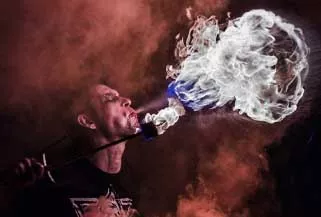
Need Sound Effects for your short or feature film project?
Download 2000+ sound effects designed for indie filmmakers & their projects for free.
Grip Department
Key Grip
The key grip is the person in charge of the grip crew on a film or television production. The men and women are in charge of positioning the production’s nonelectrical lighting gear. The people who position this equipment are also under their supervision.
He’s also responsible for all the keys on a film set…again just kidding on that last one. = )
Best Boy Grip
The best boy is the first assistant to the grip crew or the lighting department and usually fills a number of roles on a television or film set. The best boys take care of everything in the grip department to ensure a seamless production and work directly with the gaffer and the director of photography.
The best boy grip’s most important job is handling payroll for the grip department. They do the timecards and make sure everyone is getting paid what they are due. The best boy grip is the point of contact for all the other departments.
Dolly Grip
The dolly grip is used to operate the camera dolly. This technician places, levels, and moves the dolly track, then pushes and pulls the dolly while the camera operator and camera assistant ride.
Rigging Grip
Rigging Grips (aka Riggers) are a type of Grip. They assist with set up, production moves, and setting up and dismantling sets, equipment, and scenery.
Electrical Department
Gaffer
A Gaffer is in charge of running the crew and overseeing all the lighting equipment. The Chief Lighting Technician, also known as the Gaffer, works directly with the cinematographer to provide the lights and electricity needed for a given set-up.
To execute the lighting plan for production, the gaffer has to run a team of lighting technicians.
Best Boy Electric
The Best Boy Electric is the head assistant to the gaffer. While managing and scheduling the rest of the electricians and lighting technicians, they are the second in charge, typically watching over the electric truck and rentals. The best boy electric’s most important job is handling payroll for the electrical department.
They do the timecards and make sure everyone is getting paid what they are due. The best boy, electric, is the point of contact for all the other departments.
Rigging Electricians
Rigging electricians are a separate crew who work in advance of and after the shooting crew. They pre-rig stages and locations with cable and lighting equipment, along with the rigging grips, so the shooting crew spends more time shooting and less time waiting for lighting. They will also wrap locations and stages after the shooting crew is done.
Set Electricians
Set electricians will set up and focus lights for each shot of the shooting day. They will provide power to other departments as needed during the shoot day.
Shop Electricians
Shop Electricians work with the art and set dressing departments and construction crews to wire up lights and equipment that are part of the set. They also provide work lights and portable generators at locations that are being prepped.
Basecamp Electricians
Base Camp electricians provide power for campers and other vehicles away from set.
Generator Operator
Generator Operators (aka Genny Operator) are responsible for loading the generator, transporting it to the film shoot location, and ensuring that it is operational before production begins.
Art Department
Production Designer
A production designer is responsible for the art direction, design, and execution of visual elements in film production. A Production Designer’s primary job is to create environments and design key props and set dressing that helps tell the story and advance the plot in the most cinematic way possible.
He or she needs to work closely with certain other departments to ensure that the visual elements they’ve created are consistent with the rest of the film. This may include wardrobe, make-up, special make-up effects, and digital effects departments, and sometimes even the location scout.
A production designer must be organized and detail-oriented and able to multi-task in the fast-paced world of film production. They must also be a creative problem solver, able to think outside of the box.
Responsibilities:
- Collaborate with the Director and Producer to determine what type of sets and props will be needed.
- Work with the Art Director and Set Decorator to decide how to design the set best and ensure it is completed in time for filming.
- Create and oversee the construction of sets and props that are part of the story being told.
Art Director
Art Directors are responsible for executing the vision and instructions of the production designer on the set. This person helps set the tone for each shot and scene. She is in charge of the visual palette (color palette, lighting, etc.) and shapes the shots in such a way that they fit into the overall flow of the story and the overall feel of the film. They are, in many ways, a production designer’s second in command.
The director may assign specific tasks to the art director, but it’s ultimately up to them to interpret those instructions and create something unique. They also have to balance their style with that of other departments, like costume designers and sound editors, and ultimately answer to production designers.
Art Department Coordinator
The art department coordinator is a position on the production crew that is in charge of overseeing the entire art department. They are concerned with the execution of visual artistry on set. They monitor the budget for the department, keep everything in order, and ensure information flows smoothly between fields.
Construction Coordinator
Construction Managers are in charge of constructing sets and stages for film productions. From initial planning through to the final coat of paint on the finished sets, they coordinate the entire process of set building.
Carpenters
The Production Carpenter builds, installs, and removes wooden structures on the film set and location. Several construction team members carry out the producer and director’s design and creative vision.
Key Scenic
The key scenic is an artist, supervisor, and organizer responsible for making the surroundings and sets of a film look realistic within the world is established on screen. This often is in the form of paint and texturing of surfaces. Sometimes it includes sculptural elements and even molding and casting.
Scenic Artists
The scenic artist is in charge of laying out, painting, sculpting, priming, detailing, and the rest of the backdrops and hard scenic items.
Set Decorator
Set decorators add interest to the drama by creating the background of the action and explaining the context. While prop masters deal with placing objects an actor holds, set decorators are concerned with the walls, floors, vehicles, and furniture.
Set decoration is a multi-disciplinary art form. A set decorator must be well-versed in the technical aspects of production, lighting, and camera movement and be able to interface with the Special Effects department where relevant.
Leadman
A leadman is a set decoration department member who is in charge of the props and swing gang. The swing gang does the set dressing and removal.
Set Dressers
Before rolling the camera, the set dressers arranged objects on the film set. They are working under the direction of a Production Designer and the Set Decorator. Placing furniture, hanging pictures, and putting out decorative items is done by the set dressers.
Greensman
A Greenman (aka greensperson, nurseryman, greenskeeper) is responsible for taking care of anything “green” or naturally used in the production of the film. Plants, bushes, trees, flowers, etc.
Art Department Production Assistants
The assistant to the art director helps the entire art department. In many ways, they are like standard production assistants by supporting the art department exclusively.
Their responsibilities can be everything from running paperwork back and forth, to retrieving props and set decoration items from and returning props and set decoration items to rental houses, to any general departmental errands during preproduction, production, and the earliest stages of post-production as it pertains to the art department.

Do you Want to read all the television pilots from the 2016-2021 seasons?
Learn from the best storytellers and television writers working in Hollywood today. Netflix, NBC, Hulu, HBOMax, Amazon, CBS and more.
Props
Property Master
Property Masters are responsible for all props in the production, including acquiring them, keeping them organized, and making sure they’re used safely. The props master reports to the production designer and leads a team of prop makers or props-department runners.
Assistant Property Master
The assistant property masters help the prop masters with anything on set. Once a scene is wrapped, they ensure the correct props are prepared, on hand for the shoot, and archived.
Prop Maker
Any props that aren’t bought in, or hired, are made by prop makers in the properties department of feature films. Prop makers use a wide variety of materials, techniques, and tools.
Prop Assistants
The prop assistant aids the assistant props master where needed. An outside props person may be assigned to purchase props, and an inside props person may be assigned to oversee the use and maintenance of props. They report to the prop master.
Food Stylists
A food stylist is a person who prepares food for photography, video, film and even lives events. The best promotional pictures and videos of a dish can be achieved with the help of a food stylist who has an artistic and technical background.
Animal Wranglers
The animal wrangler ensures that animals or other hazardous animals don’t interfere with filming. He or she may handle and train animals for on-screen roles in movies or television shows.
Costume and Wardrobe
Costume Designer
Costume designers design and create the wardrobe, both in terms of style and functionality, which gives the actors the outfits they wear on screen.
The main responsibility of a costume designer is to create the look of a character, whether it is a superhero, an action hero or a villain, a princess, a pirate, a cowboy, a police officer or a nurse.
He or she can dress a character in any color, and they can be of any ethnicity. The designer’s goal is to create a look that reflects the character’s role and personality. Sometimes the costume designer must work in conjunction with the make-up designer to help create a seamless character design.
Assistant Costume Designer
The assistant costume designers help the costume designers with looks for actors. They plan, create, organize, and help maintain clothing.
Key Costumers
The costume designer’s artistic vision is maintained by the key costumer, who is responsible for managing personnel and on-set activities. He or she should be aware of each scene’s needs and the costumes’ evolution.
Set Costumers
Set costumers keep track of the costumes so they don’t get damaged or dirty when unloaded. After each use for dirt, tears, and other problems, they establish guidelines for actors to check their costumes and where to put them.
Wardrobe Supervisor
The wardrobe supervisor is responsible for all the costumes. In consultation with the production manager, costume designer, and sometimes the director, the wardrobe supervisor can help coordinate and assign dressers to specific performers.
Seamstress
In addition to supporting the filmmaker’s vision through their work, seamstresses, tailors, stitchers, and sewers help actors move around comfortably in their clothes. Alterations to outfits are one of their responsibilities.
Agers and Dyers
These technicians are responsible for taking freshly made costumes and adjusting them, through distressing and painting, to look (lived in). Sometimes this work is very subtle (a chip on a button, fray of a thread, a little wrinkling), and sometimes, it can be extreme (massive dirt and sweat, tearing, and heavy fraying).
Shoppers
If show demands do not require a separate buyer, the duties are to do basic shopping, buying, and returns, assist with research and phoning, can do costume breakdown and aging, can do laundry, ironing, sewing skills, and costume maintenance may assist with fittings and alterations.
Hair and Makeup
Hair Department Head
A hair department head designs all of the hairstyles for the show and manages a team of hairdressers that help implement and maintain the design vision for the principal cast, background actors, stunt performers, photo doubles, and any other hairstyles that will appear on camera.
The hair designer works with the director to discuss the story and the characters’ needs. The hair designer is also responsible for sourcing or creating all of the wigs that appear in the show, and their design is closely tied to the hairstyles that are being worn.
This can be seen in the fact that it takes the longest amount of time for a hairstyle to be designed and that the hairstyles are very detailed and unique to each character.
Makeup Department Head
The head of the makeup department is NOT to be confused with the key makeup artist, who is, in fact, the makeup department’s second in command. The Department Head oversees the makeup design for the entire production and ensures continuity throughout filming.
They will often apply makeup to lead and other principal actors for special or hard-to-produce looks.
Special Makeup Effects
Special makeup effects artists use makeup and prosthetics to recreate wounds, defects, and supernatural features. Basic film makeup can be combined with knowledge of advanced makeup techniques for more dramatic effects.
The makeup effects artist usually works in conjunction with the hair stylist, standard makeup artist, special effects coordinator, and/or costume designer. Makeup Effects artists are also responsible for proper skin care before and after the removal of special cosmetic products and prosthetics.
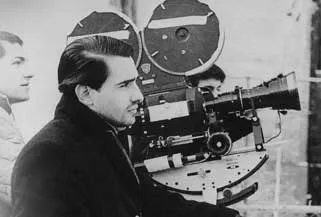
Want to watch more short films by legendary filmmakers?
Our collection has short films by Martin Scorsese, Quentin Tarantino, the Coen Brothers, Chris Nolan, Tim Burton, Steven Spielberg & more.
Stunts
Stunt Coordinator
Stunt coordinators are responsible for making sure that actors perform their stunts safely and without injury. They work closely with the stunt team and the director to ensure that the stunt work looks good on screen.
The more stunts an actor has to do, the more likely it is for something to go wrong. Because of this, stunt coordinators must have excellent communication skills and knowledge of how to handle actors who get injured on set.
Stunts are often dangerous and require careful planning. They can be as simple as a person jumping from a moving car or as complicated as a person being shot by an arrow or bullet.
It’s important for stunt coordinators to know what their actors can and cannot do and how to safely work with them in order to keep the production going smoothly.
Stunt Performer
A stuntman performs stunts to be used in a film or television show. Car crashes, falling from a great height, dragging behind a horse, and explosions are some stunts in films and television.
Stunt performers are often referred to as stuntmen or stuntwomen, although the gender-neutral term stunt performer may be used.
Stunt Rigger
The ropes and pulleys that allow stunt doubles and actors to fly off cliffs or under speeding cars without actually falling or getting run over are designed and implemented by stunt riggers. They set up hoists, scaffolding, lifts, and booms needed on film and television sets.
Visual Effects
Visual Effects Supervisor
Visual Effects (VFX) Supervisors supervise all visual effects shots on a film project. All of the VFX artists that work in the process are managed by the VFX Supervisor. They make a decision on what is needed for every shot of the film.
The visual effects supervisors and the visual effects artists sometimes create previsualization materials to help plan everything from specific VFX shots to digital elements like digitally rendered creatures or full backgrounds.
Afterward, they discuss the details of each shot and present the final VFX materials to the director, producer, and other members of the filmmaking team. In a movie scene, VFX supervisors have the ability to tell the VFX artists what kind of effects to use for any given shot.
VFX Coordinator
The VFX Coordinator organizes all the VFX for the show. This includes: Working on all aspects of the visual effects in the post-production process – Being able to understand the workflows for the visual effects – Managing schedules and resources – Scheduling and managing shots – Coordinating visual effects – Assisting with the post-production workflow of the film.
Special Effects (Practical Effects)
Special Effects Coordinator
The Director wants explosions, natural disasters, or general destruction on a movie or television show set, and that’s where the Special Effects coordinators come in. Special effects can include everything from a gas explosion in a movie to a car crash in a movie.
These are one form of practical effect. However, these days it is more and more common to include special makeup effects under the header of the term “practical effects.”
The special effects coordinator is responsible for coordinating the work of several other departments, which may include make-up, stunts, costume, and art departments, to create the desired result.
This includes everything from hiring the right people to get the job done to ensure the equipment and materials is in place when needed.
Special Effects Foreman
The Special Effects Foreman (aka SFX Forman) is the supervisor of the mechanical effects used to create non-digital optical illusions. He or she is responsible for overseeing the creation and execution of special effects on films.
The SFX Foreman is in charge of all special effects created in the visual effects industry. Their primary responsibility is to ensure that all aspects of the effects are well executed and delivered on time.
Special Effects Technicians
Special effects technicians assist the SFX supervisor and foreman in executing all necessary wind, rain, explosions, fire, and other special effects.
Armorer
Pyrotechnician
This is a specific branch of Special Effects. A Pyrotechnician is responsible for designing and orchestrating all the explosions in the movies. The work that goes into setting off explosions that end up on the big screen is much more methodical than the explosions themselves.
The explosion of fireworks is a delicate process, requiring precision, skill, and a lot of practice. And while there are plenty of ways to create explosions, there are very few ways to create the explosions that you see on the big screen.
Catering and Food Services
Production Caterer
The production caterer is responsible for providing the crew with healthy foods in order to keep them happy and satisfied so they can do their job without interruption. Otherwise, if the production crew has to work very long hours, they will not be able to eat or have to leave the set to go to restaurants or to get food brought to the set.
In order to deliver the right food for the shoot, the production caterer needs to have a deep understanding of the shooting schedule and a good working knowledge of the production budget.
The production caterer should be knowledgeable about the film’s script, production team, production schedule, and other logistical details that are critical to the success of the shoot.
Key Craft Services
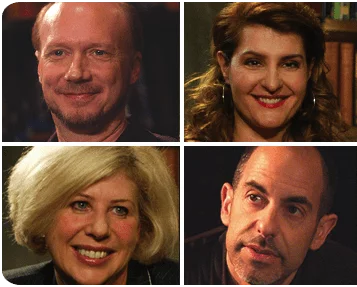
Want To Learn From Oscar® Winning & Blockbuster Screenwriters?
Learn from some the best screenwriters working in Hollywood today in this FREE three day video series.
Safety
Set Medic
A set medic is someone who provides emergency medical assistance to people on TV or in film productions. You work as a set medic on set. You have responsibilities for waiting on medical issues during shooting.
Advising the production team on safety issues is one of the other duties. When working as a set medic, you travel a lot. They work in water, at heights, in studios, or anywhere a production takes place.
Intimacy Coordinator
The well-being of actors who participate in sex scenes or other intimate scenes in theater, film, and television production is ensured by an Intimacy Coordinator. When nudity/hyper-exposed work, simulating sex acts, and intimate physical contact are needed on set, the Intimacy Coordinator acts as a liaison between the actors or performers and the production.
Covid Compliance Officer (CCO)
A Covid Compliance Officer works directly with the production to ensure the protocols and guidelines are followed. A CCO is either a stand-alone position or supported by a covid compliance supervisor on longer productions of 1-2 weeks when more planning is needed.
These individuals serve enforcement of Covid Compliance. The Health and Safety Department usually supports CCOs on longer shoots. Covid Compliance Officers (CCOs) will work with Production/Production Management (PM), Production Assistant (PA), and Production Supervisor (PS) to ensure that the cast and crew follow COVID-19 protocols.
CCOs will be in constant contact with Production during the shoot to ensure that COVID-19 protocols are being followed and enforced; if you want to learn more about filming during COVID, check out our webinar: How to Shoot a Feature Film in a COVID World.
Honey Wagon Operator
The Honey Wagon Operator is in charge of the “honey wagon.” The honey wagon is a trailer that has a number of staircases leading off of it. There will be staircases to restrooms that the cast and crew use. They will usually will not be clearly labeled “men and women” restrooms. This is probably to discourage non-production crew from using them.
Some of the staircases lead to small dressing rooms for the actors. One of the staircases may lead to a room that PAs and ADs operate out of.

